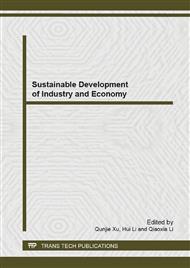p.781
p.786
p.791
p.796
p.803
p.808
p.813
p.820
p.826
Stability Analysis of Multi-Well Gas Injection for Storing CO2 in Underground Aquifer
Abstract:
One of the major technical challenges in storing CO2 by multi-well gas injection is the stability of CO2 in the aquifer. In this paper, according to an underground aquifer property in north China, a numerical model of multi-well gas injection for storing CO2 is developed to understand this mechanism, based on nonlinear seepage theory of CO2 in aquifer. The impact of working parameters during gas injection period (arrangement form of well group, the schemes of injection rate of multi-well and well spacing) on the stability of CO2 in the aquifer is analyzed. It is proved that the average reservoir pressure could be reduced using the triangular layout. Appropriately increasing the injection rate of the center well and reducing well spacing could increase the gas storage capacity of reservoir. Based on the results, the optimal gas injection schemes and the optimal well spacing of multi-well gas injection for CO2 geological storage are obtained. These results provide technical guides for CO2 sequestration using multi-well gas injection to aquifer reservoir in real projects.
Info:
Periodical:
Pages:
803-807
Citation:
Online since:
December 2013
Authors:
Price:
Сopyright:
© 2014 Trans Tech Publications Ltd. All Rights Reserved
Share:
Citation:


